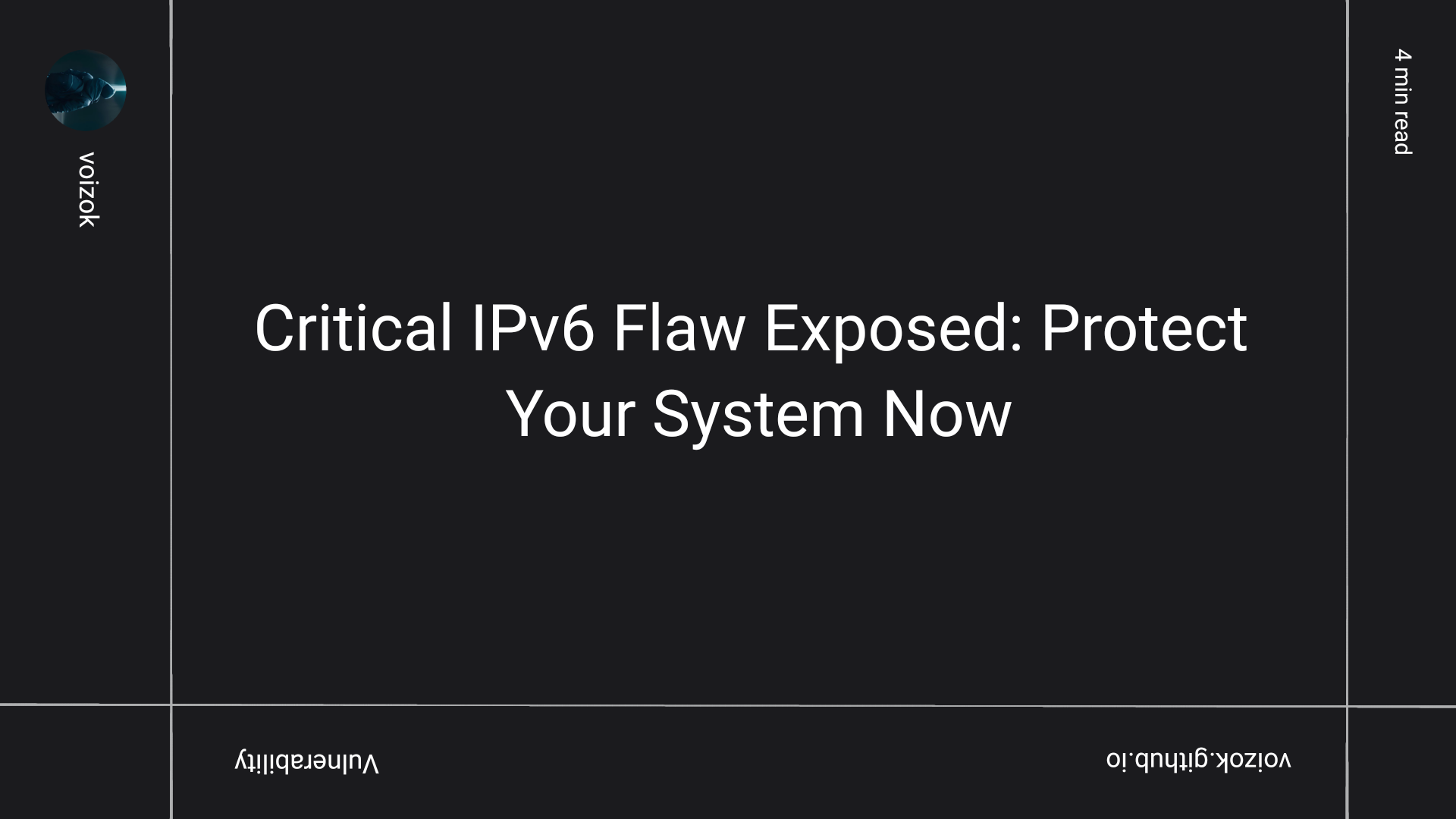Understanding the Critical Vulnerability in IPv6 - What You Need to Know
The world of cybersecurity is constantly evolving, and with it comes new threats and vulnerabilities that can compromise our digital safety. Recently, a critical flaw in IPv6 has been discovered that affects all Windows users. This vulnerability allows hackers to gain remote access to systems without any user interaction, posing a significant risk. In this article, we will explore the intricacies of IPv6, the nature of this vulnerability, and practical steps you can take to protect yourself.
What is IPv6 and Why Was It Introduced?
IPv6, or Internet Protocol version 6, was designed to address the limitations of its predecessor, IPv4. With the explosive growth of internet-connected devices, the pool of IPv4 addresses, which numbers around 4.3 billion, was quickly exhausted. This scarcity led to the development of IPv6, which offers an almost limitless number of addresses—340 undecillion, to be precise.
IPv6 was introduced to ensure that every device, from computers to smart appliances, can have a unique address on the internet. This transition was essential for the continued expansion of the internet and to accommodate the increasing number of devices that require connectivity.
The Security Implications of IPv6
While IPv6 was meant to enhance internet connectivity, it also introduced new security challenges. Unlike IPv4, where devices often hide behind a Network Address Translation (NAT) barrier, IPv6 addresses can be publicly routable. This means that devices can be accessed directly over the internet, increasing the risk of exposure to cyber threats.
Understanding the Vulnerability
The recent vulnerability in IPv6 allows attackers to exploit a flaw in how packets are processed by Windows operating systems. Hackers can send a specially crafted IPv6 packet that triggers an integer underflow, leading to a buffer overflow. This process enables hackers to take control of the affected system without any user intervention.
How Do Hackers Exploit IPv6 Vulnerabilities?
Hackers can craft malicious IPv6 packets and send them to vulnerable systems. When these packets arrive, the operating system begins to process them, going through various layers of the TCP/IP stack. The vulnerability lies in how the system calculates the size of the buffer needed to store the incoming data. If the hacker manipulates this calculation, it can result in a buffer overflow, allowing the hacker to execute arbitrary code on the system.
Types of IPv6 Addresses and Their Risks
IPv6 addresses can be categorized into different types, each with its own implications for security:
- Global Unicast Addresses (GUA): These addresses are publicly routable and can be accessed from anywhere on the internet, making them a prime target for attackers.
- Link-Local Addresses: These addresses start with “FE80” and are not routable on the internet. They are used for communication within a local network.
When checking for your IPv6 address, it’s crucial to identify whether you have a GUA. If you do, your system may be vulnerable to direct attacks from malicious actors.
Mitigation Strategies: How to Protect Yourself
To safeguard your system against the IPv6 vulnerability, there are several strategies you can implement:
1. Keep Your System Updated
Microsoft regularly releases security updates through Patch Tuesday. Ensure that your Windows operating system is up to date with the latest patches to address any known vulnerabilities, including the recent IPv6 flaw.
2. Disable IPv6 if Not Needed
If you do not require IPv6 for your network, consider disabling it. This can significantly reduce your exposure to potential attacks. However, be cautious if your network relies on IPv6 for specific applications.
3. Use Strong Passwords and Two-Factor Authentication
Your passwords are often the first line of defense against cyber threats. Use a password manager to generate and store complex passwords. Additionally, enable two-factor authentication (2FA) wherever possible to add an extra layer of security.
The Future of Internet Protocols
As the internet continues to evolve, so too will the protocols that govern it. IPv6 offers many benefits, but its adoption has been slow due to the complexities involved. Network engineers and developers must become more familiar with IPv6 to fully harness its potential while addressing its security challenges.
Understanding Dual Stack Networks
Many networks currently operate in a dual stack mode, meaning they run both IPv4 and IPv6. This coexistence can lead to additional vulnerabilities, as the interaction between the two protocols may create unforeseen security gaps. As we transition to a more IPv6-dominant internet, these issues will need to be addressed.
Conclusion
The critical vulnerability in IPv6 serves as a stark reminder of the evolving landscape of cybersecurity. As hackers become more sophisticated, it is crucial for individuals and organizations to stay informed and proactive in protecting their digital environments. By understanding the risks associated with IPv6 and implementing effective mitigation strategies, you can help safeguard your systems against potential attacks.
As we move forward, remember that cybersecurity is not a one-time task but an ongoing process. Stay vigilant, keep your knowledge up to date, and prioritize the security of your digital assets.
